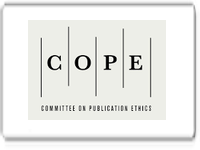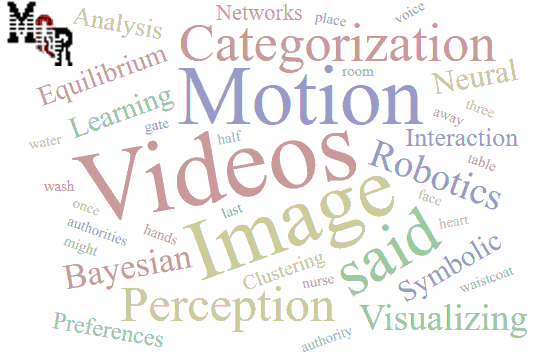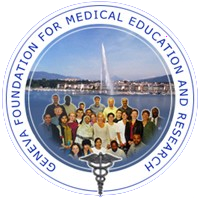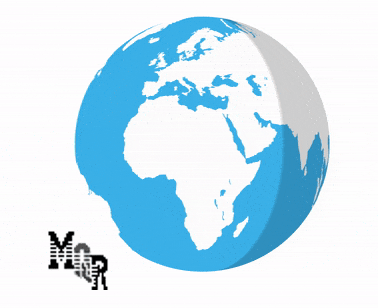Metales pesados Cd, Pb y Hg: Una problemática de salud pública en el contexto de las relaciones internacionales e importancia de la academia en su mitigación.
DOI:
https://doi.org/10.56048/MQR20225.7.3.2023.2545-2578Palabras clave:
Metales pesados; Contaminación; Industria química; Organismos internacionales; Academia; Química inorgánicaResumen
La presencia de metales pesados como cadmio (Cd), plomo (Pb) y mercurio (Hg) representa una seria preocupación en la salud pública global. Estos elementos tóxicos ejercen un impacto perjudicial en humanos, animales y plantas, generando enfermedades y alteraciones en diversos sistemas biológicos. La contaminación por estos metales se ha evidenciado a nivel planetario, afectando múltiples entornos acuáticos como ríos, mares, esteros y lagos, tanto en forma de disolución en el agua como en sedimentos y organismos acuáticos. Adicionalmente, la presencia de estos metales en suelos agrícolas y alimentos agrava la preocupación debido a su potencial para entrar en la cadena alimentaria. Este artículo se enfoca en analizar las dimensiones globales de esta problemática, considerando las implicaciones que posee en el ámbito de las relaciones internacionales. La contaminación por metales pesados no conoce fronteras, afectando a múltiples naciones y comunidades en diferentes formas. Además de sus consecuencias en la salud humana, estos contaminantes también inciden en las economías, el comercio internacional y la seguridad alimentaria. Además, examina cómo las universidades pueden desempeñar un papel central en la mitigación de esta problemática. Las instituciones académicas poseen el conocimiento, la experiencia y los recursos necesarios para abordar esta amenaza global desde diversas perspectivas: investigación científica, formación profesional y participación activa en políticas públicas y relaciones internacionales. El propósito de este trabajo de investigación es arrojar luz sobre la gravedad de la situación, fundamentada en evidencia científica sólida, con el fin de catalizar acciones concretas por parte de organismos internacionales, gobiernos y universidades. Se busca impulsar la toma de decisiones que promuevan políticas y estrategias efectivas para reducir los riesgos asociados con la exposición a metales pesados. La colaboración en la esfera de las relaciones internacionales es esencial para abordar este problema transnacional, ya que la mitigación de la contaminación por metales pesados requiere un enfoque coordinado y la implementación de regulaciones estrictas en la producción industrial y el manejo de desechos. En última instancia, este artículo subraya la necesidad de una respuesta global para abordar la amenaza de los metales pesados a la salud pública y el medio ambiente, haciendo hincapié en la importancia de la cooperación internacional en la formulación y ejecución de soluciones efectivas.
Descargas
Métricas
Cited
DOI: 10.56048![]()
Citas
Abdel-Satar, A. (2005). Water quality assessment of river Nile from Idfo to Cairo. Egyptian Journal of Aquatic Research, 31(2), 200–223.
Abt, E., Fong Sam, J., Gray, P., & Robin, L. P. (2018). Cadmium and lead in cocoa powder and chocolate products in the US Market. Food Additives and Contaminants: Part B Surveillance, 11(2), 92–102. doi:https://doi.org/10.1080/19393210.2017.1420700
Alves Peixoto, R. R., Oliveira, A., & Cadore, S. (2018). Risk assessment of cadmium and chromium from chocolate powder. Food Additives and Contaminants: Part B Surveillance, 11(4), 256–263. doi:https://doi.org/10.1080/19393210.2018.1499676
Apraez, D. (2023). “Estudio sobre la prevalencia de metales pesados cadmio (Cd) y plomo (Pb) en arroz (Oriza sativa L.). Obtenido de http://www.dspace.uce.edu.ec/bitstream/25000/30253/1/UCE-FCQ-CQA-APRAEZ%20DIEGO.pdf
Araújo, C., & Cedeño-Macias, L. (2016). Heavy metals in yellowfin tuna (Thunnus albacares) and common dolphinfish (Coryphaena hippurus) landed on the Ecuadorian coast. Science of the Total Environment, 541, 149-154.
Arcos, V., & Castro, R. (2005). Metales pesados en agua, sedimentos y organismos. Revista Científica de Ciencias Naturales y Ambientales, 1(1), 103-120.
Aunan, K., Fang, J., Vennemo, H., Oye, H., Kenneth, & Seip, H. (2004). Co-benefits of climate policy—lessons learned from a study in Shanxi, China. Energy Policy, 32(4), 567-581. doi:https://doi.org/10.1016/S0301-4215(03)00156-3
Aveiga, A., Banchón, C., Mendoza, L., Calderón, J., & Delgado, M. (2022). Distribución de metales pesados en agua, sedimentos y peces del río Carrizal, Ecuador. INGENIERÍA HIDRÁULICA Y AMBIENTAL, XLIII(13-23). doi:versión impresa ISSN 1680-0338; versión On-line ISSN 2788-6050
Avigliano, E., Monferrán, M. V., Sánchez, S., Wunderlin, D. A., Gastaminza, J., & & Volpedo, A. V. (2019). Distribution and bioaccumulation of 12 trace elements in water, sediment and tissues of the main fishery from different environments of the La Plata basin (South America): Risk assessment for human consumption. Chemosphere, 236, 124394. doi:https://doi.org/1
Blacksmith, I. (2007). The World’s Worst Polluted Places: The Top Ten of The Dirty Thirty. Obtenido de file:///C:/Users/matth/Downloads/P22JU5.pdf
Blais, J., Duff, K. E., Laing, T., & Smol, J. (1999). Regional Contamination in Lakes from the Noril'sk Region in Siberia, Russia. Water, Air, & Soil Pollution, 110, 389–404. doi:https://doi.org/10.1023/A:1005059325100
Braun, M., Lindern, I., Khristoforova, N. K., Kachur, A. H., Yelpatyevsky, P. V., Elpatyevskaya, V. P., & Spalinger, S. M. (2002). Environmental Lead Contamination in the Rudnaya Pristan – Dalnegorsk Mining and Smelter District, Russian Far East. Environmental Research, 88(3), 164-73. doi:doi: 10.1006/enrs.2002.4329.
Byrne, J., Li, C., & Cun, Z. (2010). Linfen, China: Green Cities: an A-Z guide. Sage. Obtenido de https://www.researchgate.net/publication/229090786_Linfen_China
Carpio, Y. (2016). Cuantificación de cadmio (Cd) y Plomo (Pb) en agua, sedimento y plantas en el Río Chimbo del Cantón Marcelino Maridueña, Prov. Guayas. Tesis de Maestría. Facultad de Ciencias Naturales, Universidad de Guayaquil, Ecuador.
CDC/NCEH/DEEH/EHSB; Hubbard Brian. (2005). Development of an Integrated Intervention Plan to Reduce Exposure to Lead and Other Contaminants in the Mining Center of La Oroya, Perú. USAID, Perú. Obtenido de https://www.cdc.gov/nceh/ehs/docs/la_oroya_report.pdf
Chen, C. Y., Chen, Y. T., Chen, K. S., Hsu, C. C., Liu, L. L., Chen, H. S., & Chen, M. H. (2018). Arsenic and five metal concentrations in the muscle tissue of bigeye tuna (Thunnus obesus) in the Atlantic and Indian Oceans. Marine Pollution Bulletin, 129(1), 186-193.
Cubero, A. V. (04 de 2019). “Identificación del peligro por contaminación de metales pesados y bacterias patógenas en los sedimentos del embalse de Central Hidroeléctrica Platanar de COOPELESCA R. L., Costa Rica”. Cartago.
Da Silva, Y. J., Cantalice, J. R., Singh, V. P., Do Nascimento, C. W., Wilcox, B. P., & & Bezerra Da Silva, Y. J. (2019). Heavy metal concentrations and ecological risk assessment of the suspended sediments of a multi-contaminated Brazilian watershed. . https://doi.org/10.4025/actasciagron.v41i1.42620. Acta Scientiarum - Agronomy, 41(1), 1–11.
DENNIS, I. F., CLAIR, T. A., DRISCOLL, C. T., KAMMAN, N., CHALMERS, A., SHANLEY, J., . . . KAHL, A. S. (2005). Distribution Patterns of Mercury in Lakes and Rivers of Northeastern. Ecotoxicology, 14, 113–123. doi:https://doi.org/10.1007/s10646-004-6263-0
Diario Oficial de la Unión Europea. (22 de 10 de 2008). REGLAMENTO (CE) No 1102/2008 DEL PARLAMENTO EUROPEO Y DEL CONSEJO relativo a la prohibición de la exportación de mercurio metálico y ciertos compuestos y mezclas de. ( L 304/75). Obtenido de https://eur-lex.europa.eu/legal-content/ES/TXT/PDF/?uri=CELEX:32008R1102&from=EN
Duncan, A., Vries, N., & & Biritwum, K. (2017). Assessment of Heavy Metal Pollution in the Sediments of the Roanoke River. . Water Air Soil Pollut, 229, 272. doi:https://doi.org/10.1130/abs/2017se-290796
Dwina, R., Indah, R., Suharyanto, Agus, S., & Fajar, H. (2006). Biomarker as an Indicator of River Water Quality Degradation. PROC. ITB Eng. Science, 38 B(2 ), 115-122.
Enb, A., Donia, A., Abd-Rabou, N., Abou-Arab, A., & El-Senaity, M. (2009). Chemical composition of raw milk and heavy metals behavior during processing of milk products. Global Vet(3), 268-275.
FAO. (2023). El Estado de la Seguridad Alimentaria y la Nutrición en el Mundo.
FAO, FIDA, OMS, PMA y UNICEF. (2023). Versión resumida de El estado de la seguridad alimentaria y la nutrición en el mundo 2023. Urbanización, transformación de los sistemas agroalimentarios y dietas saludables a lo largo del continuo rural-urbano. Roma, FAO. doi:http://doi.org/10.4060/cc6550es
FAO; CEPAL. (Mayo de 2020). Sistemas alimentarios y COVID-19 en América Latina y el Caribe: impacto y riesgos en el mercado laboral. (5). FAO, ECLAC. Obtenido de https://www.cepal.org/en/publications/45651-food-systems-and-covid-19-latin-america-and-caribbean-ndeg-5-impact-and-risks
FAO; GTIS. (2019). La contaminación del suelo, una realidad oculta. (N. Rodríguez, M. McLaughlin, & Daniel Pennock, Recopiladores) Roma, Italia. Obtenido de http://www.fao.org/3/I9183ES/i9183es.pdf
Flores, E., Pozo, W., Pernía, B., & Sánchez, W. (2018). Niveles de cadmio en atún fresco y enlatado para consumo humano en Ecuador. MASKANA, 9(2), 35–40. doi: https://doi.org/10.18537/mskn.09.02.05
Gammons, C. H., Slotton, D. G., Gerbrandt, B., Weight, W., Young, C. A., McNearny, R. L., . . . & Tapia, H. (2006). Mercury concentrations of fish, river water, and sediment in the Río Ramis-Lake Titicaca watershed, Peru. Science of the Total Environment, 368, (2–3), 637–648. doi:https://doi.org/10.1016/j.scitotenv.2005.09.076
Ganjavi, M., Ezzatpanah, H., Givianrad, M., & Shams, A. (2010). Effect of canned tuna fish processing steps on lead and cadmium contents of Iranian tuna fish. . Food Chemistry, 118(3), 525-528.
Gaur, A., & Adholeya, A. (2004). Prospects of arbuscular mycorrhizal fungi in phytoremediation of heavy metal contaminated soils. Current Science, 86(4), 528-534.
González-Estecha, M. B.-P.-P. (Nov. de 2014). Exposición al metilmercurio en la población general; toxicocinética; diferencias según el sexo, factores nutricionales y genéticos. 30(5). Madrid. doi:http://dx.doi.org/10.3305/nh.2014.30.5.7727
Grandjeanab, P., Weihe, P., F, R., Debes, F., Arakie, S., Yokoyama, K., . . . Dahl, R. (Noviembre-Diciembre de 1997). Cognitive Deficit in 7-Year-Old Children with Prenatal Exposure to Methylmercury. 19, 6, 417-428. doi:https://doi.org/10.1016/S0892-0362(97)00097-4
Green Peace; Blacksmith Institute and WHO. (2013). The world's worst polluted places 2013: Cleanup, progress and ongoing challenges. Impreso y electrónico. Obtenido de https://www.worstpolluted.org/docs/TopTenThreats2013.pdf
Guzzi, G., & Gigatto, A. R. (2021). Toxic effects of mercury in humans and mammals. doi:10.1016/j.chemosphere.2020.127990
Harris, R. R., & & Santos, M. C. (2000). Heavy metal contamination and physiological variability in the Brazilian mangrove crabs Ucides cordatus and Callinectes danae (Crustacea: Decapoda). Marine Biology, 137(4), 691–703. doi:https://doi.org/10.1007/s002270000382
Herrera, F., & Lozano, S. (2016). Informe Final de Tesis "Regimen de Responsabilidad Internacional de los estados: a propósito de los daños ambientales transfronterizos del Río Puyango Tumbes "014-2015.". Tumbes, Perú.
Huang, X. S. (2008). Water quality in the Tibetan Plateau: Metal contents of four selected rivers. Environmental Pollution, 156(2), 270-277. doi:https://doi.org/10.1016/j.envpol.2008.02.014
Hussein, A., & Khaled, A. (2014). Determination of metals in tuna species and bivalves from Alexandria, Egypt . The Egyptian Journal of Aquatic Research, 40(1), 9-17.
Ikem, A., & Egiebor, N. O. (2005). Assessment of trace elements in canned fishes (mackerel, tuna, salmon, sardines and herrings) marketed in Georgia and Alabama (United States of America). Journal of Food Composition and Analysis, 18(8), 771–787. doi: https://doi.org/10.1016/j.jfca.2004.11.002
Islam, M. A., Al-mamun, A., Hossain, F., Quraishi, S. B., Naher, K., Khan, R., . . . & Tamim, U. (2017). Contamination and ecological risk assessment of trace elements in sediments of the rivers of Sundarban mangrove forest, Bangladesh. Marine Pollution Bulletin, In Press, 1-11. doi: https://doi.org/10.1016/j.marpolbul.2017.07.059
Järup, L., & Alfvén, T. (2004). Low Level Cadmium Exposure, Renal and Bone Effects- the OSCAR Study. Biometals, 17(5), 505–509.
Jinadasa, B. K., Chathurika, G. S., Jayasinghe, G. D., & Jayaweera, C. D. (2019). Mercury and cadmium distribution in yellowfin tuna (Thunnus albacares) from two fishing grounds in the Indian Ocean near Sri Lanka. Heliyon, 5(6), e01875. doi:https://doi.org/10.1016/j.heliyon.2019.e01875
Kaul, B., Sandhu, R. S., Depratt, C., & Reyes, F. (1999). Follow-up screening of lead-poisoned children near an auto battery recycling plant, Haina, Dominican Republic. Environmental Health Perspectives: Chidren's health article, 107(11). doi:https://doi.org/10.1289/ehp.99107917
Kazi, T., Jalbani, N., Baig, J., Kandhro, G., Afridi, H. A., & Jamali, M. (2009). Assessment of toxic metals in raw and processed milk samples using electrothermal atomic absorption. Food and Chemical Toxicology, 47(9), 2163-2169.
Kılıç, E. &. (2017). Determination of Spatiotemporal Variations in Heavy Metal Concentration through Orontes River. . Turkish Journal of Agriculture - Food Science and Technology, 5(9), 1086. doi:https://doi.org/10.24925/turjaf.v5i9.1086-1093.1298
Kraus, U., & Wiegand, J. (2006). Long-term effects of the Aznalcóllar mine spill—heavy metal content and mobility in soils and sediments of the Guadiamar river valley (SW Spain). Science of The Total Environment, 367(2-3), 855–871. doi:https://doi.org/10.1016/j.scitotenv.2005.12.027
Kruszewski, B., Obiedziński, M. W., & Kowalska, J. (2018). Nickel, cadmium and lead levels in raw cocoa and processed chocolate mass materials from three different manufacturers. Journal of Food Composition and Analysis, 66, 127–135. doi:https://doi.org/10.1016/j.jfca.2017.12.012
La República. (31 de 07 de 2020). Tumbes: admiten demanda contra Ecuador por presunta contaminación del río Puyango. (B. R. @larepublica_pe, Recopilador) Perú. Recuperado el 07 de 03 de 2021, de https://larepublica.pe/sociedad/2020/07/31/tumbes-admiten-demanda-contra-ecuador-por-presunta-contaminacion-del-rio-puyango-lrnd/?ref=lre
Laila, K., Zug, M., Alfredo, H., Yupanqui, H., Meyberg, F., Cierjacks, J. S., & Cierjacks, A. (2019). Cadmium Accumulation in Peruvian Cacao ( Theobroma cacao L .) and Opportunities for Mitigation. Water Air Soil Pollut, 230(72).
Lee, B., Joe, D. G., & Weinberg, J. (Mayo de 2014). Introducición a la contaminación por mercurio y al Convenio de Minamata sobre mercurio para las ONG. Recuperado el 1 de Diciembre de 2020, de https://ipen.org/sites/default/files/documents/ipen-booklet-hg-update-v1_6a-es-web.pdf
Licata, P., Trombetta, D., Cristani, M., Giofrè, F., Martino, D., Calò, M., & & Naccari, F. (2004). Levels of "toxic" and "essential" metals in samples of bovine milk from various dairy farms in Calabria. Environment International, 30(1), 1-6.
Lima, L., Olivares-Rieumont, S., Columbie, I., de la Rosa Mederos, D., & Gil, R. (2005). Niveles de plomo, zinc, cadmio y cobre en el Rio Almendares, Ciudad Habana, Cuba. Rev. Inter. Cont. Amb., 21(3), 115–124.
Llobet, J., Granero, S., Schuhmacher, M., & Corbella J, &. D. (1998). Biological monitoring of environmental pollution and human exposure to metals in Tarragona, Spain. Estimation of the dietary intake. Trace Elem Electroly., 15 (3)., IV, 136-141. Spain.
Lo Dico, M. G. (2018). Toxic metal levels in cocoa powder and chocolate by ICP-MS method after microwave-assisted digestion. Food Chemistry(245), 1163–1168. doi:https://doi.org/10.1016/j.foodchem.2017.11.052
Londoño-Franco, L., Ondoño-Muñoz, P., & Muñoz-García, F. (Julio - Diciembre de 2016). Los riesgos de los metales pesados en la salud humana y animal. 14(2), 145-153. Medellín. doi:10.18684/BSAA(14)145-153
Lora, R., & Bonilla, H. (2010). Remediación de un suelo de la Cuenca Alta del Río Bogotá contaminado con los metales pesados cadmio y cromo. Revista U.D.C.A Actualidad & Divulgación Científica, 13(2), 61–70.
Mata, H. K., Al Salah, D. M., N. G., Konde, J. N., Mulaji, C. K., Kiyombo, G. M., & Poté, J. W. (2020). Toxic metal concentration and ecotoxicity test of sediments from dense populated areas of Congo River, Kinshasa, Democratic Republic of the Congo. Environmental Chemistry and Ecotoxicology, 2, 83–90. doi:https://doi.org/10.1016/j.enceco.2020.07.001
Merieux NutriSciences. (04 de 04 de 2017). Importancia de los “metales pesados” en los alimentos. (B. Cooper, Editor) Obtenido de Importancia de los “metales pesados” en los alimentos: https://www.merieuxnutrisciences.com/mx/news/importancia-de-los-%E2%80%9Cmetales-pesados%E2%80%9D-en-los-alimentos
Mero, M., Pernía, B., Ramírez-Prado, N., Bravo, K., Ramírez, L., Larreta, E., & Egas, F. (2019). Concentration of cadmium in water, sediments, eichhornia crassipes and pomacea canaliculata in the Guayas (Ecuador) river and tributaries. Revista Internacional de Contaminacion Ambiental, 35(3). doi:https://doi.org/10.20937/RICA.2019.35.03.09
Meybeck, M., Lestel, L., Bonté, P., Moilleron, R., Colin, J. L., Rousselot, O., . . . Thévenot, D. R. (2007). Historical perspective of heavy metals contamination (Cd, Cr, Cu, Hg, Pb, Zn) in the Seine River basin (France) following a DPSIR approach (1950–2005). Science of The Total Environment, 375(1-3), 204–231. doi:https://doi.org/10.1016/j.scitotenv.2006.12.017
Miedico, O. P., Moscatelli, S., Chiappinelli, A., Carosielli, L., & Chiaravalle, A. E. (2020). Lead, cadmium and mercury in canned and unprocessed tuna: six-years monitoring survey, comparison with previous studies and recommended tolerable limits. Journal of Food Composition and Analysis, 94, 103638. doi:https://doi.org/10.1016/j.jfca.2020.103638
Mol, S. (2011). Levels of selected trace metals in canned tuna fish produced in Turkey. Journal of Food Composition and Analysis, 24(1), 66–69. doi:https://doi.org/10.1016/j.jfca.2010.04.009
Mondal, P., Schintu, M., Marras, B., Bettoschi, A., Marrucci, A., Sarkar, S. K., . . . Biswas, J. K. (2020). Geochemical fractionation and risk assessment of trace elements in sediments from tide-dominated Hooghly (Ganges) River Estuary, India. Chemical Geology. 532, 119373. doi:https://doi.org/10.1016/j.chemgeo.2019.119373
Mounicou, S., Szpunar, J., Andrey, D., Blake, C., & Lobinski, R. (2003). Concentrations and bioavailability of cadmium and lead in cocoa powder and related products. Food Additives and Contaminants, 20(4), 343–352. doi:https://doi.org/10.1080/0265203031000077888
Nava-Ruíz, C., & Méndez-Armenta, M. (2011). Efectos neurotóxicos de metales pesados (cadmio, plomo, arsénico y talio). Archivos de Neurociencias(16), 3, 140-147.
Nhiwatiwa, T., Barson, M., Harrison, A. P., Utete, B., & Cooper, R. G. (2011). Metal concentrations in water, sediment and sharptooth catfish Clarias gariepinus from three peri-urban rivers in the upper Manyame catchment, Zimbabwe. African Journal of Aquatic Science https://doi.org/10.2989/16085914.2011.636906, 36(3), 243–252.
Núñez, R., García, M. Á., Alonso, J., & Melgar, M. J. (2018). Arsenic, cadmium and lead in fresh and processed tuna marketed in Galicia (NW Spain): Risk assessment of dietary exposure. Science of the Total Environment, 627, 322–331. doi:https://doi.org/10.1016/j.scitotenv.2018.01.253
Okoye U., P. (25 de Abril de 2022). Contaminación ocasionada por microplásticos y metales pesados presentes en las colillas de cigarros. Obtenido de https://acmor.org/publicaciones/contaminaci-n-ocasionada-por-micropl-sticos-y-metales-pesados-presentes-en-las-colillas-de-cigarros
Omar, W. A., & Mahmoud, H. M. (2017). Risk assessment of polychlorinated biphenyls (PCBs) and trace metals in River Nile up- and downstream of a densely populated area. Environmental Geochemistry and Health, 39(1), 125–137. doi:https://doi.org/10.1007/s10653-016-9814-4
OPS-OMS. (s/f). Mercurio. Recuperado el 23 de 08 de 2020, de https://www.paho.org/hq/index.php?option=com_content&view=article&id=8865:2013-mercury&Itemid=675&lang=es
Osán, J., Török, S., Alföldy, B., Alsecz, A., Falkenberg, G., Baik, S. Y., & Van Grieken, R. (2007). Comparison of sediment pollution in the rivers of the Hungarian Upper Tisza Region using non-destructive analytical techniques. Spectrochimica Acta Part B Atomic Spectroscopy, 62(2), 123–136. doi: https://doi.org/10.1016/J.SAB.2007.02.005
Peixoto, R. R., Devesa, V., Vélez, D., Cervera, M. L., & Cadore, S. (2016). Study of the factors influencing the bioaccessibility of 10 elements from chocolate drink powder. Journal of Food Composition and Analysis, 48, 41–47. doi:https://doi.org/10.1016/j.jfca.2016.02.002
Pérez-Carrera, A., Arellano, F., & Fernández-Cirelli, A. (2016). Concentración de oligoelementos en leche cruda de vacas del sureste de la provincia de Córdoba, Argentina. Dairy Sci. & Technol. , 96, 591–602. doi:https://doi.org/10.1007/s13594-016-0290-5
Pernía, B., Mero, M., Bravo, K., Ramírez, N., López, D., Muñoz, J., & Egas, F. (2015). Detección de cadmio y plomo en leche de vaca comercializada en la ciudad de Guayaquil, Ecuador. Rev. Cient. Cien. Nat. Ambien., 8(2), 81–86.
Pizarro, J., Vergara, P. M., Rodríguez, J. A., & Valenzuela, A. M. (2010). Heavy metals in northern Chilean rivers: Spatial variation and temporal trends. . Journal of Hazardous Materials, 181(1-3), 747–754. doi:https://doi.org/10.1016/j.jhazmat.2010.05.076
Proshad, R., Kormoker, T., & Islam, S. (2019). Distribution, source identification, ecological and health risks of heavy metals in surface sediments of the Rupsa River, Bangladesh. Toxin Reviews, 0(0), 1-25. doi:https://doi.org/10.1080/15569543.2018.1564143
Prüss-Üstün, A., Bonjour, S., & and Corvalan, C. (2008). “The impact of the environment on health by country: a meta-synthesis. Environmental Health, 25; 7:7. doi:https://doi.org/10.1186/1476-069X-7-7
Prüss-Üstün, A., Bonjour, S., & Corvalán, C. (2008). The impact of the environment on health by country: a meta-synthesis. Environmental Health, 7(7). doi:doi:10.1186/1476-069X-7-7
Ramírez, A. (2002). Toxicología del cadmio. Conceptos actuales para evaluar exposición ambiental u ocupacional con indicadores biológicos, 63(1), 51 - 64. (U. N. Marcos, Recopilador) doi:ISSN 1025 - 5583
Ramírez, N. P., Mero, M., Larretaa, E., Noboa-Cárdenas, A., Ramírez-Moreira, L., López, D., . . . Castro, R. (2016). Pomacea canaliculata (Lamarck, 1828) como bioindicador de la presencia de cadmio en el río Guayas, Daule y Babahoyo. Rev. Cient. Cien. Nat. Ambien., 10(1), 19–28.
Rees, N., & Richard, F. (2020). The Toxic Truth: Children’s Exposure to Lead Pollution Undermines a Generation of Future Potential. Obtenido de https://www.unicef.org/media/73246/file/The-toxic-truth-children%E2%80%99s-exposure-to-lead-pollution-2020.pdf
Reyes, Y., Vergara, I., Torres, O., Díaz-Lagos, M., & González, E. (2016). Contaminación por metales pesados: Implicaciones en salud, ambiente y seguridad alimentaria. Ingeniería Investigación y Desarrollo, 16 (2), 66-77.
Rodríguez, H. D. (12 de 2017). Intoxicaión Ocupacional por metales pesados. 21(12). Santiago de Cuba. Recuperado el 01 de 03 de 2021, de http://scielo.sld.cu/scielo.php?script=sci_arttext&pid=S1029-30192017001200012
Rodríguez, H., Sánchez, E., Rodríguez, M., Vidales, J., Acuña, K., Martínez, G., & Rodríguez, J. C. (2005). Metales pesados en leche cruda de bovino. Obtenido de Revista de la Facultad de Salud Pública y Nutrición:://www.respyn.uanl.mx/vi/4/articulos
Rubio, C., Gutiérrez, A., Martín-Izquierdo, R., C., R., & Lozano, G. y. (2004). El plomo como contaminante alimentario. Revista de Toxicología, 21(2-3 ), 72-80. doi: 0212-7113
Ruelas-Inzunza, J. G.-R.-N.-J. (2011). Biomonitoring of Cd, Cr, Hg and Pb in the Baluarte River basin associated to a mining area (NW Mexico). . Science of the Total Environment, 409(18), 3527–3536. doi:https://doi.org/10.1016/j.scitotenv.2011.05.035
Sager, M., McCulloch, C. R., & Schoder, D. (2018). Heavy metal content and element analysis of infant formula and milk powder samples purchased on the Tanzanian market: International branded versus black market products. Food Chemistry, 255, 365–371. doi:https://doi.org/10.1016/j.foodchem.2018.02.058
Sánchez-soledispa, C. E., Zambrano-vera, D. C., Arévalo-castro, O., & Pernía, B. (2021). Study of Heavy Metal Concentrations in Powdered Chocolate Marketed in Guayaquil, Ecuador. Investigation, 16, 62–77. doi:https://doi.org/10.31095/investigatio.2021.16.6
Sanín, L., Gonzales-Coccío, Romieu, I., & Hernández-Ávila, M. (27 de 04 de 1998). Acumulación de plomo en hueso y sus efectos en la salud. Morelos, Cuernavaca, México. Obtenido de https://www.scielosp.org/article/spm/1998.v40n4/359-368/
Schwartz, G., Il’Yasova, D., & Ivanova, A. (2003). Urinary Cadmium, Impaired Fasting Glucose, and Diabetes in the NHANES III. Diabetes Care, 26(2), 468–470.
Senior, W., Cornejo, M., Tobar, J., Ramírez, M., & Márquez, A. (2016). Metales pesados (cadmio, plomo, mercurio) y arsénicoen pescados congelados de elevado consumo en el Ecuador. Zootecnia Tropical, 34(2), 143-153.
SERVINDI. (1 de 04 de 2020). Afectados por metales pesados son más vulnerables ante el COVID-19. Obtenido de https://www.servindi.org/actualidad-noticias/31/03/2020/peruanos-afectados-por-metales-pesados-vulnerables-ante-el-covid-19
Shara, S., Moersidik, S., & Soesilo, T. E. (2021). Potential health risks of heavy metals pollution in the Downstream of Citarum River. IOP Conf. Ser.: Earth Environ. , 623. Obtenido de https://iopscience.iop.org/article/10.1088/1755-1315/623/1/012061
Singh, H., Pandey, R., Singh, S. K., & Shukla, D. N. (2017). Assessment of heavy metal contamination in the sediment of the River Ghaghara, a major tributary of the River Ganga in Northern India. Applied Water Science, 7(7), 4133–4149. doi:https://doi.org/10.1007/s13201-017-0572-y
SOMOS. (31 de Mayo de 2022). Cómo evitar los metales pesados y su riesgo neurodegenerativo. Recuperado el 15 de Junio de 2023, de https://www.somos.me/blog/como-evitar-los-metales-pesados-y-su-riesgo-neurodegenerativo
Strady, E., Dinh, Q. T., Némery, J., Nguyen, T. N., Guédron, S., Nguyen, N. S., . . . Nguyen, P. D. (2017). Spatial variation and risk assessment of trace metals in water and sediment of the Mekong Delta. Chemosphere, 179, 367–378. doi:https://doi.org/10.1016/j.chemosphere.2017.03.105
Sultan, K., Shazili, N. A., & Peiffer, S. (2011). Distribution of Pb, As, Cd, Sn and Hg in soil, sediment and surface water of the tropical river watershed, Terengganu (Malaysia). . Journal of Hydro-Environment Research, 5(3), 169–176. doi:https://doi.org/10.1016/j.jher.2011.03.001
Suwazono, Y. S., Vahter, M., Filipsson, A. F., Skerfving, S., & Lidfeldt, J. &. (2006). Benchmark dose for cadmium-induced renal effects in humans. Environ Health Perspect., 114(7), 1072-6. doi:DOI: 10.1289/ehp.9028
Suyatna, I., Sulistyawati, Adnan, A., Syahrir, M., Ghitarina, G., Abdunnur, A., & Saleh, S. (s.f.). Heavy metal levels in water and fish samples from coastal waters of Mahakam Delta, Kutai Kartanegara District, East Kalimantan, Indonesia. AACL Bioflux, 10(5), 1319-1329.
Tarras-Wahlberg, N. H., Flachier, A., Lane, S. N., & Sangfors, O. (2001). Environmental impacts and metal exposure of aquatic ecosystems in rivers contaminated by small scale gold mining: The Puyango River basin, southern Ecuador. Science of the Total Environment, 278, 239–261. doi: https://doi.org/10.1016/S0048-9697(01)00655-6
The World Health Organization. (2013). Obtenido de http:// www.who.int/gho/phe/en/
Tsai, L., Yu, K., & Ho, S.-T. (2007). Cadmium distribution in sediment profiles of the six main rivers in southern Taiwan. . Journal of Hazardous Materials, 148(3), 630–639. doi:https://doi.org/10.1016/J.JHAZMAT.2007.03.024
UNEP. (2020). United Nations Environment Programme. An Assessment Report on Issues of Concern: Chemicals and Waste Issues Posing Risks to Human Health and the Environment. doi:ISBN No: 978-92-807-3808-7
UNICEF. (29 de 07 de 2020). A third of the world’s children poisoned by lead, new groundbreaking analysis says UNICEF. Obtenido de https://www.unicef.org/press-releases/third-worlds-children-poisoned-lead-new-groundbreaking-analysis-says
UNICEF. (29 de 07 de 2020). Un tercio de los niños del mundo están envenenados con plomo, revela estudio de UNICEF. Obtenido de Noticias ONU - Salud: https://news.un.org/es/story/2020/07/1478121
Vellosa, M., Capparellia, G., Massaine, Moulatleta, de Souza, D. M., Abessae, O., . . . Cipriani-Avila, I. (2020). An integrative approach to identify the impacts of multiple metal contamination sources on the Eastern Andean foothills of the Ecuadorian Amazonia. Science of the total environment, 709, 136088. doi:https://doi.org/10.1016/j.scitotenv.2019.136088
Voegborlo, R., & El-Methnani, A. (1999). Mercury, cadmium and lead content of canned tuna fish. Food Chemistry. 67(4), 341-345.
Wasim Aktar, M., Paramasivam, M., Ganguly, M., Purkait, S., & Sengupta, D. (2010). Assessment and occurrence of various heavy metals in surface water of Ganga river around Kolkata: A study for toxicity and ecological impact. Environmental Monitoring and Assessment, 160 (1-4), 207–213. doi: https://doi.org/10.1007/s10661-008-0688-5
WHO. (23 de 9 de 2016). Metales pesados: ¿necesidad de más acciones? V Foro Interguvernamental de Seguridad Química. Budapest, Hungría.
WHO. (23 de 08 de 2019). Intoxicación por plomo y salud. Obtenido de https://www.who.int/es/news-room/fact-sheets/detail/lead-poisoning-and-health
WHO. (s/f). Enfoque Estratégico para la Gestión de Productos Químicos a Nivel Internacional. Recuperado el 23 de 08 de 2020, de https://www.who.int/ipcs/saicm/saicm/es/
Woitke, P., Wellmitz, J., Helm, D., Kube, P., Lepom, P., & Litheraty, P. (2003). Analysis and assessment of heavy metal pollution in suspended solids and sediments of the river Danube. . Chemosphere, 51(8), 633–642. doi: https://doi.org/10.1016/S0045-6535(03)00217-0
Wojtkowska, M., Karwowska, E., Chmielewska, I., Bekenova, K., & Wanot, E. (2015). Copper and cadmium in bottom sediments dredged from Wy ś cigi Pond , Warsaw , Poland — contamination and bioaccumulation study. . Environ Monit Assess, 187, 737. doi:https://doi.org/10.1007/s10661-015-4945-0
Yohei, K., Takahiro, W., Kyoko, H., & Hiroshi, A. (2018). Surveillance of Cadmium Concentration in Chocolate and Cocoa Powder Products Distributed in Japan. . Food Hyg. Saf. Sci. , 59(6), 269–274. doi:https://doi.org/10.3358/shokueishi.59.269
Zhang, H., & Reynolds, M. (2019). Cadmium exposure in living organisms: A short review. Science of The Total Environment. doi:https://doi.org/10.1016/J.SCITOTENV.2019.04.395
Zhao, X., Yao, L., Ma, Q., Zhou, G., Wang, L., & Fang, Q. (2018). Chemosphere Distribution and ecological risk assessment of cadmium in water and sediment in Longjiang River , China : Implication on water quality management after pollution accident. Chemosphere, 194, 107–116. doi:https://doi.org/10.1016/j.chemosphere.2017.11.127
Zhou, Q., Yang, N., Li, Y., Ren, B., Ding, X., Bian, H., & Yao, X. (2020). Total concentrations and sources of heavy metal pollution in global river and lake water bodies from 1972 to 2017. Global Ecology and Conservation, 22, e00925. doi:https://doi.org/10.1016/j.gecco.2020.e00925
Zodape, G., Dhawan, V., & Wagh, R. (2012). Determination of metals in cow milk collected from Mumbai city, India. Srilanka: Eco Revolution Colombo, 9, 270–274.
Publicado
Cómo citar
Número
Sección
Licencia
Derechos de autor 2023 MQRInvestigar

Esta obra está bajo una licencia internacional Creative Commons Atribución 4.0.
Los autores se comprometen a respetar la información académica de otros autores, y a ceder los derechos de autor a la Revista MQRInvestigar, para que el artículo pueda ser editado, publicado y distribuido. El contenido de los artículos científicos y de las publicaciones que aparecen en la revista es responsabilidad exclusiva de sus autores. La distribución de los artículos publicados se realiza bajo una licencia 



































